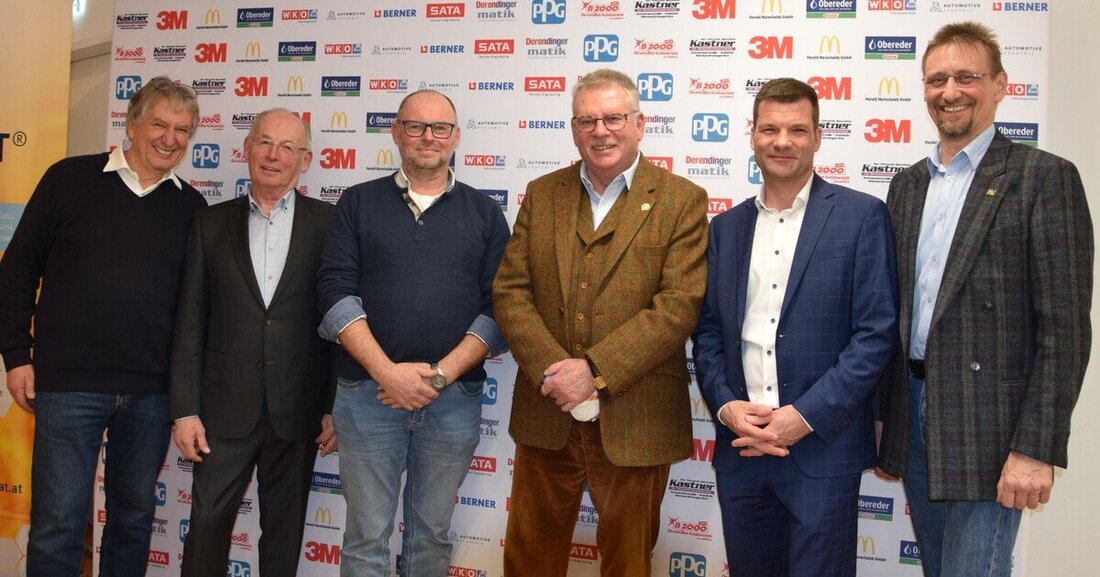AI helps with claims processing
The Vienna State Guild of Automotive Technology organized a further training evening on the topic of “damage settlement”.

AI helps with claims processing
The speakers Manfred Kubik (BIM deputy), Alexander Bayer (head of the VVO technical office), Franz Ofer (head of the Paint and Body Competence Center) provided information about claims settlement over time. The lectures and the subsequent discussion were moderated by Arthur Clark, formerly BIM the body construction technician, body painter and wheelwright. Candidates for the master body construction examination in Vienna were also among the listeners. The event organized by the Vienna State Guild of Automotive Technology is supported by the companies Audatex/Solera, DAT Austria and Eurotax.
Manfred Kubik talked about the type sheets that started it all. The necessary repairs were recorded on the type sheet, the items were completed in the office and the documents were sent by post to the data provider. He calculated the transmitted damage reports and sent them to the workshop. The workshop or the expert informed the vehicle owner or the insurance company about the costs. “The average processing time was 3 to 4 weeks – the fax was a quantum leap,” says Kubik. Later came the Eurotax calculation books from which you could select all positions, which took a lot of time. Ultimately, data capture and calculation were modernized using PC solutions. At first there was one CD per month to import data for new models and updated prices, later came the DVDs, as over 4 GB of data were sent monthly.
Today, the workshops work with 3D damage recording, there are mobile solutions, and the monthly updates run fully automatically in the background. The amount of data has grown enormously, reaching 8 to 12 GB per month. The workshops communicate with the insurers via portals with a traffic light system or displays about the status of coverage. The flat rate additional costs can be charged through portal processing; electronic invoices are sometimes available. “This means that the entire process can be traced electronically and precisely, which means we minimize communication errors,” says Alexander Bayer. During the pandemic, digitalization has taken a giant step forward. Small damages are only partially inspected and in many cases assessed using photos. Video viewing is also being used more and more frequently. “It is important to emphasize that the video itself is not saved, but only the photos of the damage,” emphasizes Bayer. Basically, the respective insurance company determines the type of inspection for the specific case of damage - with the expert on site, as a screen calculation based on photos, as a telephoto/photo expertise based on photos or as a video inspection.
The insurers and the data providers have different systems because one would not be acceptable for everyone because they are independent companies with their own solutions. “We would like companies to see better market penetration of the calculation software,” says Franz Ofer. According to surveys by data providers and an online survey by the Federal Guild, over 40 percent of companies work without calculation programs in the workshop. Due to new technologies, materials and their processing, the calculation in claims processing is constantly changing, and it is important to always be up-to-date.
The future lies in the use of artificial intelligence (AI) to detect and assess damage; data providers are already testing the new technologies. The use of the latest digital tools increases transparency for the customer and saves resources such as time and personnel costs. "Despite advancing digitalization and AI, experts will continue to be needed in the future. This will mean that there will be more areas of specialization with specially trained employees," says Bayer.
Even though electronic tools are becoming more and more sophisticated, people still come first, as all participants in the discussion agreed. "The workshop and the expert should always meet at eye level and exchange ideas. What the repair company is entitled to according to the calculation is what it should get - whatever it weighs, that's what it has," says Ofer. “There are two experts in dialogue – one repairs and the other inspects; the aim is to ensure economical repairs for the customer’s vehicle.” Alexander Bayer, chief technician at VVO, emphasized that he values open discussions and joint solution finding as important building blocks in the cooperation between the insurance and repair industries in Austria. "That's precisely why the claims process works very well, as evidenced by the low rate of cases pending in court. What the workshop is entitled to is due to it, but the costs should also be acceptable for the insurance company in the premium."
- 7.215 Millionen versicherter Fahrzeuge in Österreich, davon 5.133 Millionen Pkw.
- 1.345.830 Schadensfälle, davon 463.473 Haftpflichtfälle, 882.357 Kaskofälle.
- 2.688 Millionen Euro Schadensleistung, davon 1.152 Millionen Euro für Haftpflichtfälle, 1.536 Millionen Euro für Kaskofälle.

 Suche
Suche
 Mein Konto
Mein Konto